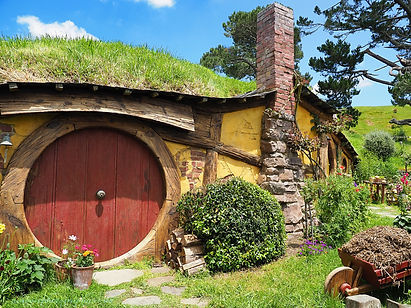Roofing
Green roofs explained
A green or so-called living roof is a very environmentally friendly option to cover your roof. Before your green roof goes on, the structure is waterproofed. Layers of soil, gravel, and plants are added. The type of plants vary and can be tailored to suit. You have the option of maintaining your rooftop and planting similar plants to your garden or you can choose plants that are self-sufficient and do not require any ongoing maintenance. Some people, especially in cities overseas, utilise this space to plant herbs and even vegetables.

Increasing populations and therefore buildings, roads and other types of infrastructures lead to more spaces where rainwater cannot naturally drain anymore. Our storm water drainage systems are not always anymore designed to deal with the ever-increasing water that comes its' way. Green roofs help mitigate flooding issues as they retain a large part of the water, sending less water to the storm water pipes. Studies have been conducted in the US (4) and Australia (5) as well as other countries. In those studies the benefits of green roofs beyond its other advantages to storm water quality and drainage were proven.
Advantages of a green roof:
-
Noise cancellation: This is a roof where you will not hear the rain falling down on it unlike most others
-
Insulation: Green roofs provide fantastic natural insulation keeping you warm in winter and cool in summer while being good for the planet
-
Reduces the potential of flooding: As the vast majority of rainwater is utilised by the roof itself the overflow of storm water pipes is greatly reduced
-
Green roofs absorb parts of the heat of the sun and the wind. This creates a more comfortable and healthier environment in urban spaces (3)
-
The photosynthesis process of plants provide better air quality and nourishment to us and animals, improving the overall environment of our cities (3)
-
A green roof can in some instances be used as a terrace, creating calm
Disadvantages of a green roof:
-
Potentially more maintenance work depending on chosen plants (for gardening lovers and advantage...)
-
Stronger roofing structure required to hold the weight of a green roof
-
Some waterproofing materials for the roof structure underneath the soil and gravel are harmful to the environment


Sources:
(3) Current World Environment, 'Mitigating Urban Heat Island Through Green Roofs', Authors: Roozbeh Arabi, Mohd Fairuz Shahidan, M.S. Mustafa Kamal, Mohamad Fakri Zaky Bin JA AFAR and Mehdi Rakhshandehroo, 20.11.2014
(4) Ecological Engineering, 2011, Volume 37, Issue 6, 'Effect of a modular extensive green roof on stormwater runoff and water quality', Authors: Gregoire, Bruce G; Clausen, John C
(5) Science of the Total Environment, 02/2014, Volume 470-471, 'Impact of green roofs on stormwater quality in a South Australian urban environment', Authors: Razzaghmanesh, M; Beecham, S; Kazemi, F
